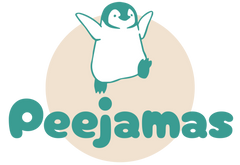For as long as there have been people, there has been the need to clean up after babies and toddlers after they go about their, uh, business. While it’s relatively easy to keep your baby’s bum clean and dry in today’s world, it hasn’t always been that way. Diapering has evolved for the better over the last few thousand years of people caring for children. If you’re interested in a little diaper history (and want to feel profoundly grateful for the times of diapering genius we are living in nowadays), this is just the article for you.

(Pixabay / Saulo_Prata)
Pre-Diapers
You may have found yourself sitting on the throne a time or two, pondering upon such imponderables as:
- Why is a building called a building when it is already built?
- When does a large puddle become a pond, and when does a pond become a lake?
- Why do we say an alarm is going off when it’s actually going on?
- What did people do before diapers?
While we can’t necessarily answer the first three for you, we do have the answer to that last one. Cloth diapers didn’t really become a “thing” until the 1800s, which is NUTS when you think about it! There are records of some form of diapering going back thousands of years, but what we know of as the cloth diaper is actually less than 200 years old. So what did people do before then?
In hot climates, parents often let their children run naked or strategically placed a small beaded or cloth loincloth to preserve the baby’s modesty. While it could get messy at times, parents often paid very close attention to their baby’s body language (nowadays called “elimination communication”) and tried to position them so that they urinated or defecated in a designated spot.
Those ancient cultures that tried to contain #1 and #2 instead of letting it flow freely used different absorbent materials to try and wick away the moisture. Parents wrapped children in leaves, animal skins, and rudimentary fabric and then stuffed the wrappings with straw, moss, grass, or similar materials. I don’t know about you, but that is not a present I would like to unwrap…
Swaddling was also a popular way to keep children diapered, but it wasn’t done the way you probably think of babies in the candy-striped blankets of the newborn ward. Swaddles in the pre-diaper days were horizontal, and vertical strips of fabric that were wrapped around the baby’s torso and legs. Sometimes the bum area was left exposed, but often the babies were completely wrapped, and their swaddling clothes were only changed every few days. Again, not my idea of the perfect present.
The Cloth Diaper
Cloth diapers – rectangular or triangular panels of fabric – only started to gain popularity in the mid-to-late 1800s. Remember, this was the era when Queen Victoria famously said, “I take a bath once a month, whether I need it or not,” so hygiene wasn’t necessarily something people went out of their way for. These cloth diapers were changed every few days – days, people! – and, understandably, up to a quarter of the infants had severe diaper rash.
When safety pins became popular in the late 1800s, they added another layer of health hazard in that, if parents accidentally poked their kid during the diapering process, that prick could get dangerously infected by the extended presence of fecal matter. Add to that the fact that the diapers would get so soiled that they needed extremely harsh chemicals to get them clean – a problem that burned many a baby’s backside. If you’re still reeling about people changing their kid’s diaper every few days, remember that at that time, people didn’t realize that they could prevent disease simply by washing things often and the right way.
Innovations
Cloth diapers were really hitting their stride around the 1940s, so when women started taking over the men’s jobs during WWII, they didn’t have as much time (or energy!) to devote to cleaning diapers. Thus, the diaper cleaning service was born! Now women could send away their cloth diapers and have someone else do all the dirty work.
Around this time, disposable diapers made their first appearance. What started out as an absorbent center made from layered crepe paper that held a little less than ½ cup of liquid, has since transformed into a polymer core than can hold over two cups of liquid! Not only that, but the disposable diaper’s core is now designed so that the moisture is wicked away from the child’s rump faster than you can say, “Queen Victoria only bathed once a month.”
The introduction of snaps, then Velcro closures, then re-closeable plastic closures has since made disposable diapers even handier. The shape has also changed from being a rectangle to more of an hourglass shape with elastic bands around the legs and middle to allow for a snugger fit that leaves little room for leakage.
The diapering world is constantly improving, and we are excited about the contribution that Peejamas are making on this frontier. With their sewn-in pad made from a bamboo-cotton blend that can absorb up to 10 ounces of liquid, they are the perfect solution for kids who are potty-trained during the day but struggle with nighttime accidents.
Peejamas catch and contain most liquid. They are soft and snuggly when dry, but when they are wet, they can feel uncomfortable, which is highly motivating for kids who are working toward nighttime dryness—kind of like a bed wetting monitor to alert kids that it’s time to get up and go potty.
All in all, if you have a young child, it’s a great time to be alive. Next time you change your child’s diapers (or equivalent product), you can breathe a sigh of relief that you’re dealing with their messes today—and not a couple hundred years ago.


